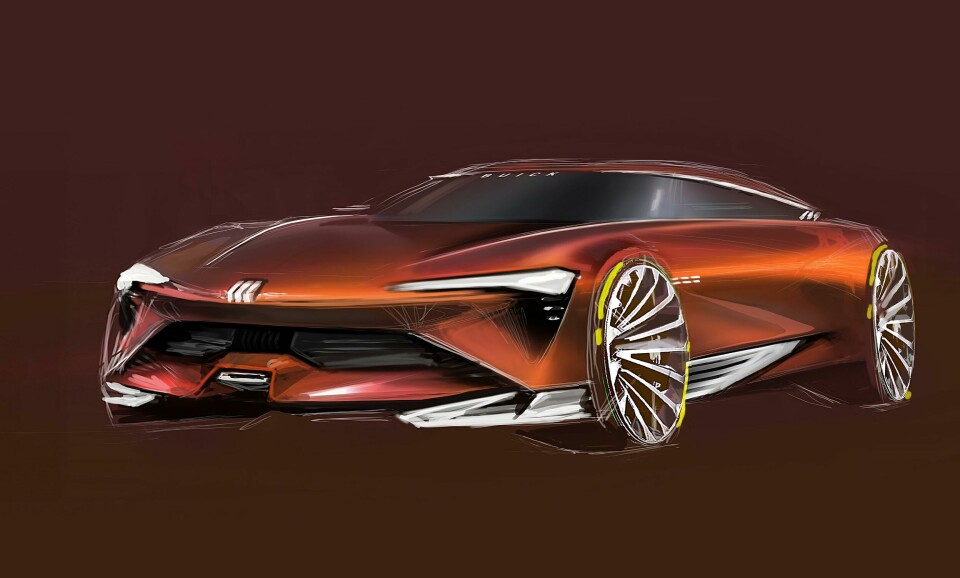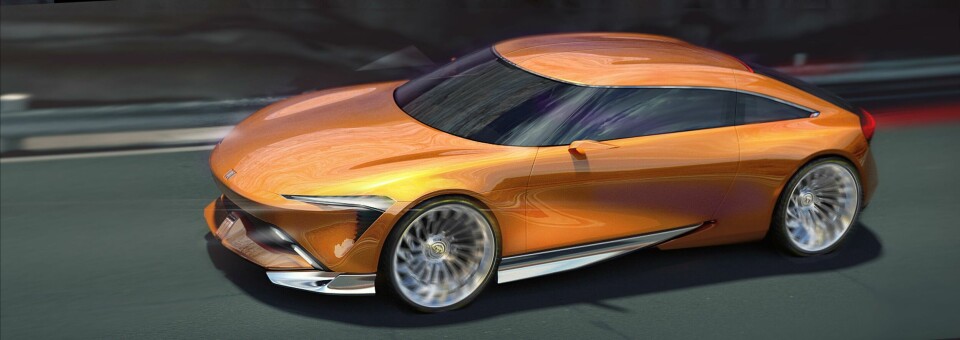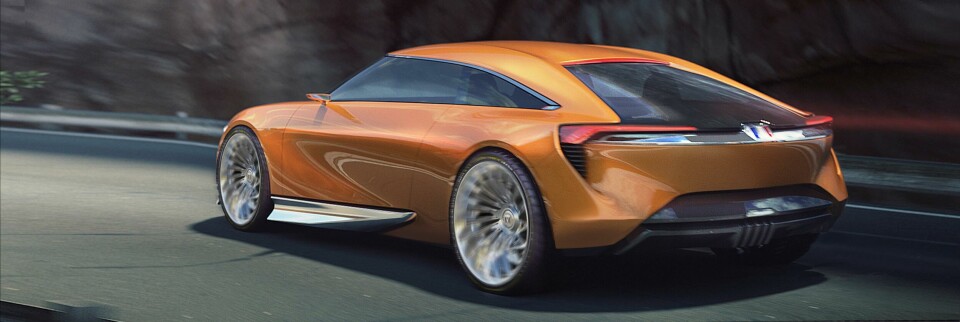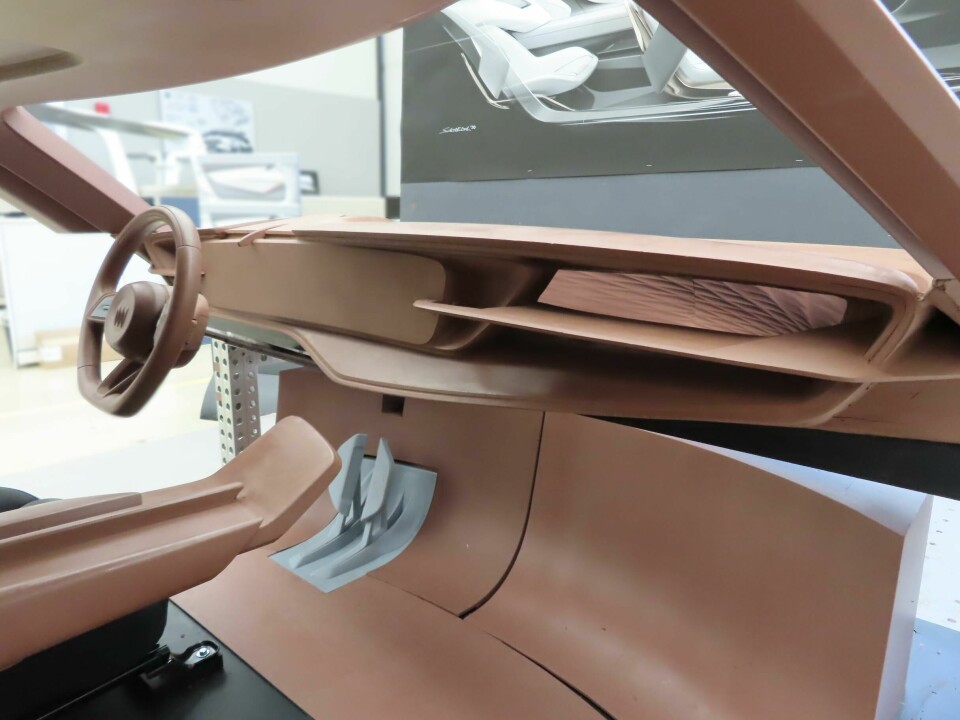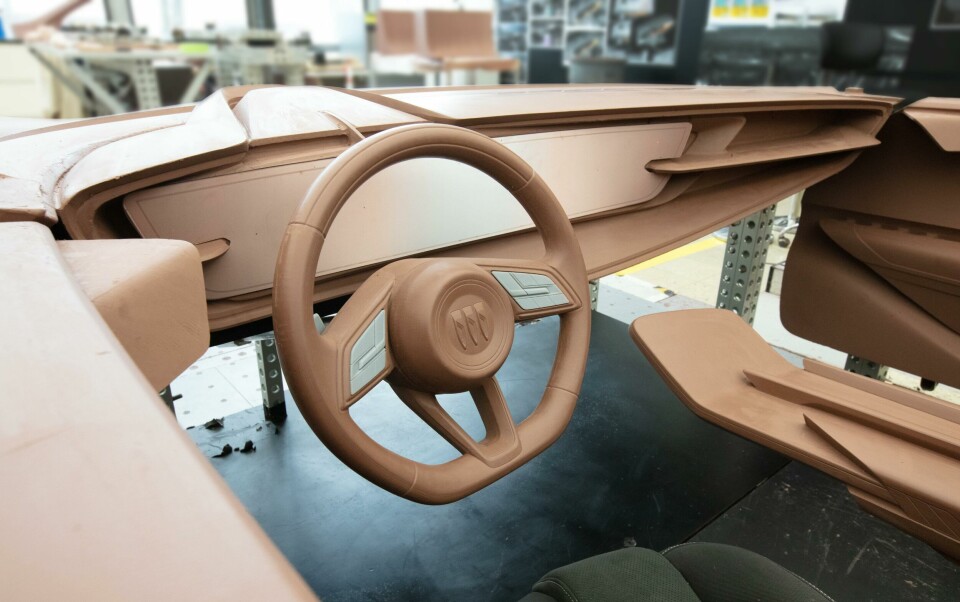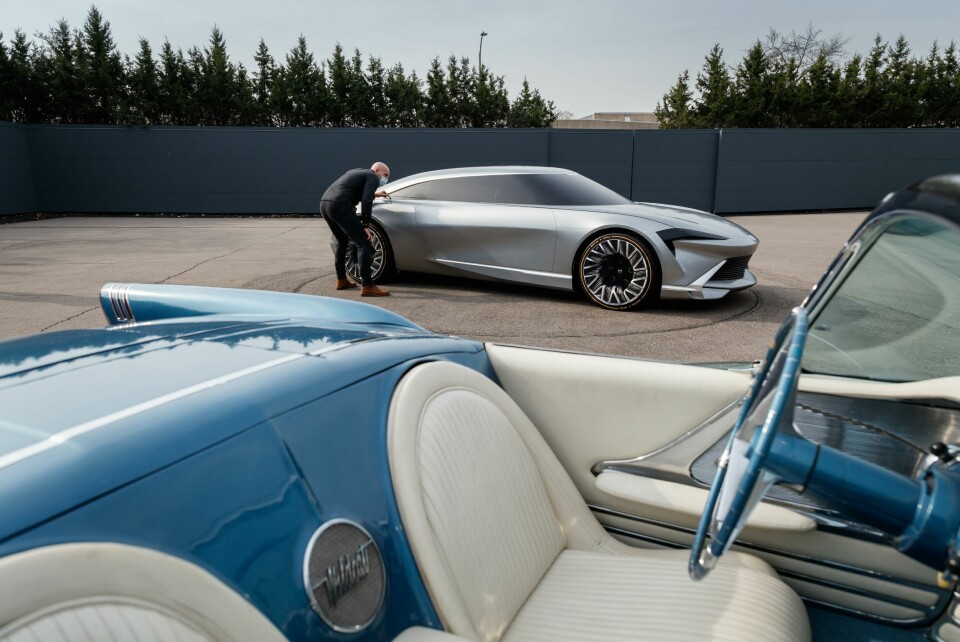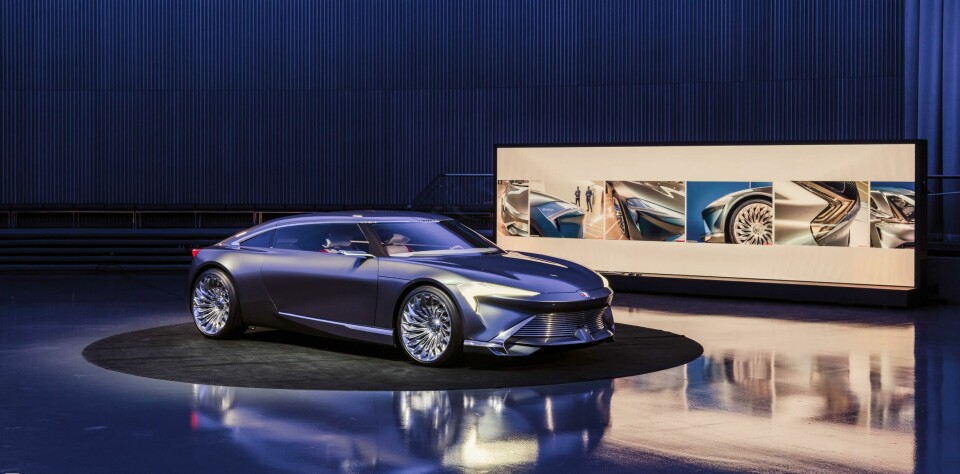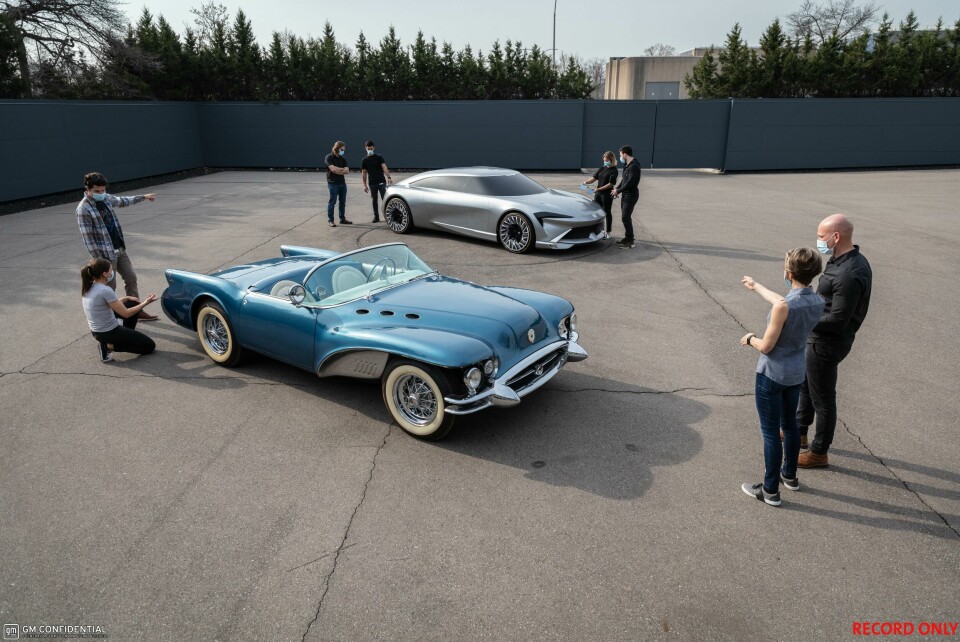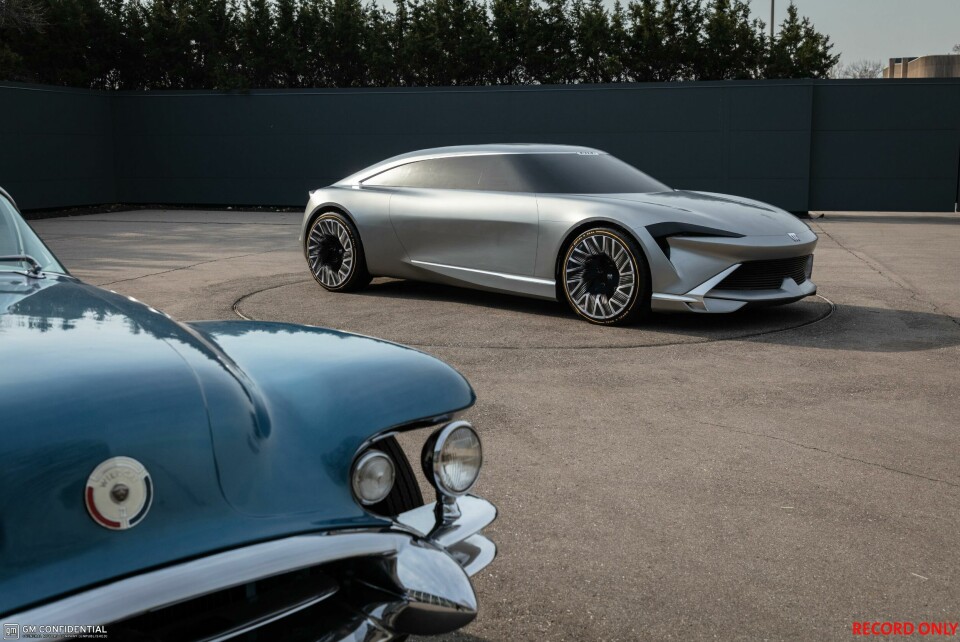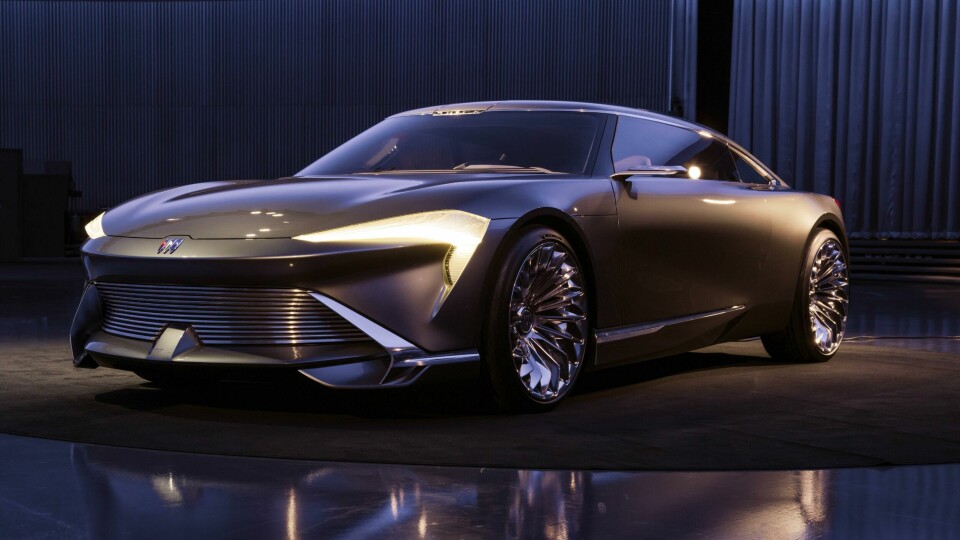
Bob Boniface on Buick’s new face
Car Design News spoke to director for Global Buick Design Bob Boniface about how the GM brand got it’s new face
Redesigning the face of car is trickier than ever given the added layer of complexity ushered in by EVs. In search of a new identity, design director at Buick Bob Boniface threw down the gauntlet to his team. An initial sketched proposal ended up turning into the Wildcat concept. Boniface tells the story to CDN.
Bob Boniface: The project didn’t start with anyone asking us to change the face internally. We have a small studio here with very passionate car folks, and we knew we were transitioning to all EV. That will be an inflection point for any brand making that switch. I simply asked the designers during a sketch review: “Given a clean sheet of paper, what would you do with the face of the brand?”
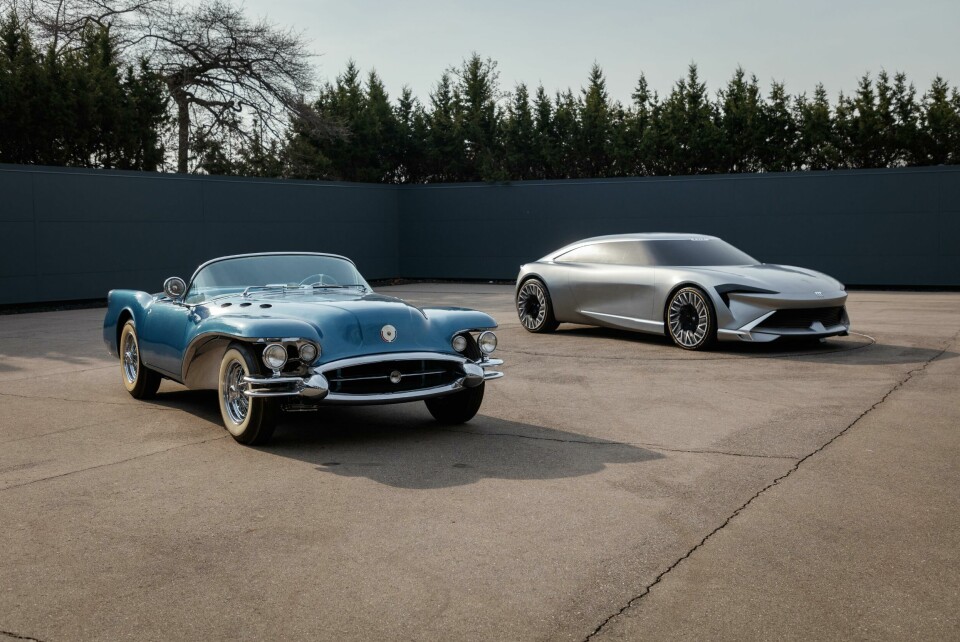
One of our designers came up with an orange sketch which ultimately became the Wildcat. It was a simple graphic signature with this low mouth, high lamps, and a body-mounted badge. We didn’t want to do something retro, but we also started looking back to Buick’s heyday around the 1950s, say, the Harley Earl era. All the Buick vehicles at that time had this low mouth, the edges of which were adorned with bullet-shaped Dagmars. The badge was body-mounted and the lamps were high. And that sketch also included an iteration of the Buick Tri-Shield logo. It didn’t have the ring, and the three shields weren’t stacked like they were previously.
This is a bigger leap than what they were going through back in the 50s
Our transition to an EV future was a good time to introduce a new face, a new badge, a new day. Buick has always been about an optimism for the future, and I always say that if Harley Earl could be brought back to life, he’d be really upset that cars still had wheels.
Car Design News: Given the changes going on, it is a good time to be optimistic about the future.
BB: In terms of technology, this is a bigger leap than what they were going through back in the 50s. That was a stylistic interpretation of the era. There was really nothing about the vehicles at that time that was technologically related to the Jet Age.
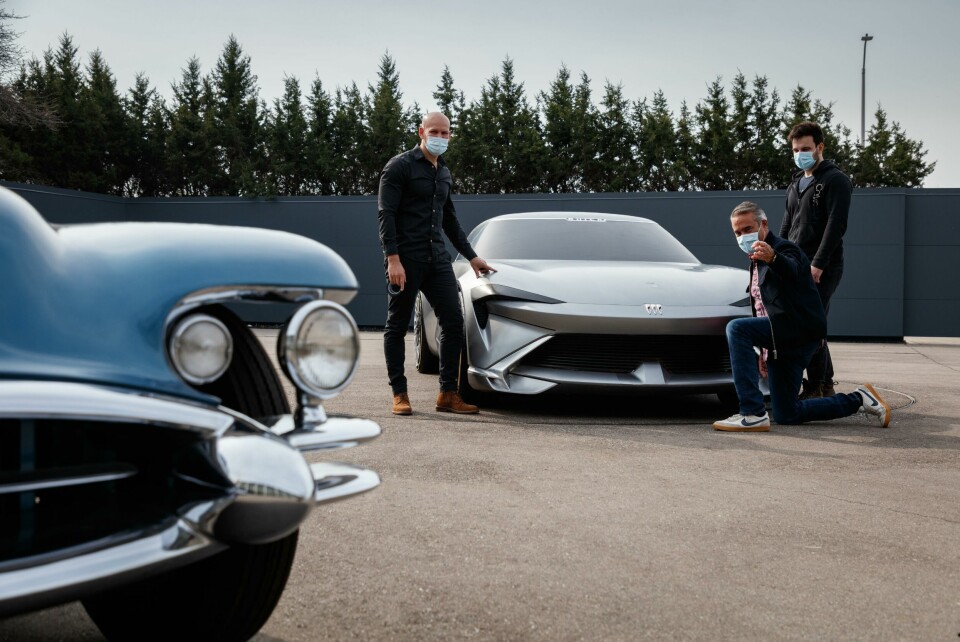
CDN: Seeing as you embarked upon this project independently of management, how did the project evolve internally?
BB: We built a scale model of that orange sketch – not on any particular package at the time. It was just a one-third scale model. And we hid it in plain sight in the studio. So, Michael was coming through for one of his reviews about something else, and I said, “Let’s place the model over here, not say anything about it, and see if he notices.”
Mary Barra and Mark Reuss liked the car so much they said, “Let’s just build it and show it to the public”
So, at the end of the review, Mike’s walking out of the studio, sees the model, and stops. He looks at it, and then me, and says, “What’s this?” And I say, “Oh, funny you should ask.” He stayed for another half hour, 45 minutes just talking about that car, talking about the front end. And he said, “You should make this an internal concept. Why don’t you go full-size with it.”
At this time we were getting ready to refresh the entire portfolio – the Encore GX mid cycle was coming up, the Envista, the electric E5 which has been shown in China. All this was looming in front of us. And so it was so well received, this full-size model, this internal concept, that it became the North Star for the brand. And ultimately Mary Barra and Mark Reuss liked the car so much they said, “Let’s just build it and show it to the public.”
CDN: Did you sense from the sketch that you were onto something?
BB: We see all sorts of cool sketches. And every designer wants to do their own thing. Generally the drive is to add more things: more features, more material breaks, more part lines, feature lines, and so forth. This sketch was so simple, and new, and relevant for the brand, it just seemed to tick a lot of boxes for me. I should say, there was a lot of pushback from the designers within the studio, because I had said that I wanted to see a new face, and I liked this one sketch, and then they kept exploring a bunch of other things. And I had to stop them at one point. I said, “Listen, remember just three things, low mouth, body-mounted badge, high lamps.”
Buick was Harley Earl’s playground
CDN: Simplicity is the hardest thing to do well.
BB: Yes – I’m a vintage car historian, so I’m very aware of the designs that have legs. The designs that look good for a long time tend to be the ones that are simple, but still new. And I find that over styling a vehicle timestamps it in a way, and they don’t look good for a long time.
If you think of some of the European brands that have legs, you think of Porsche, Aston Martin, Jaguar and so forth. There’s a simplicity and an elegance, yet still a spark of creativity. They are evergreen.
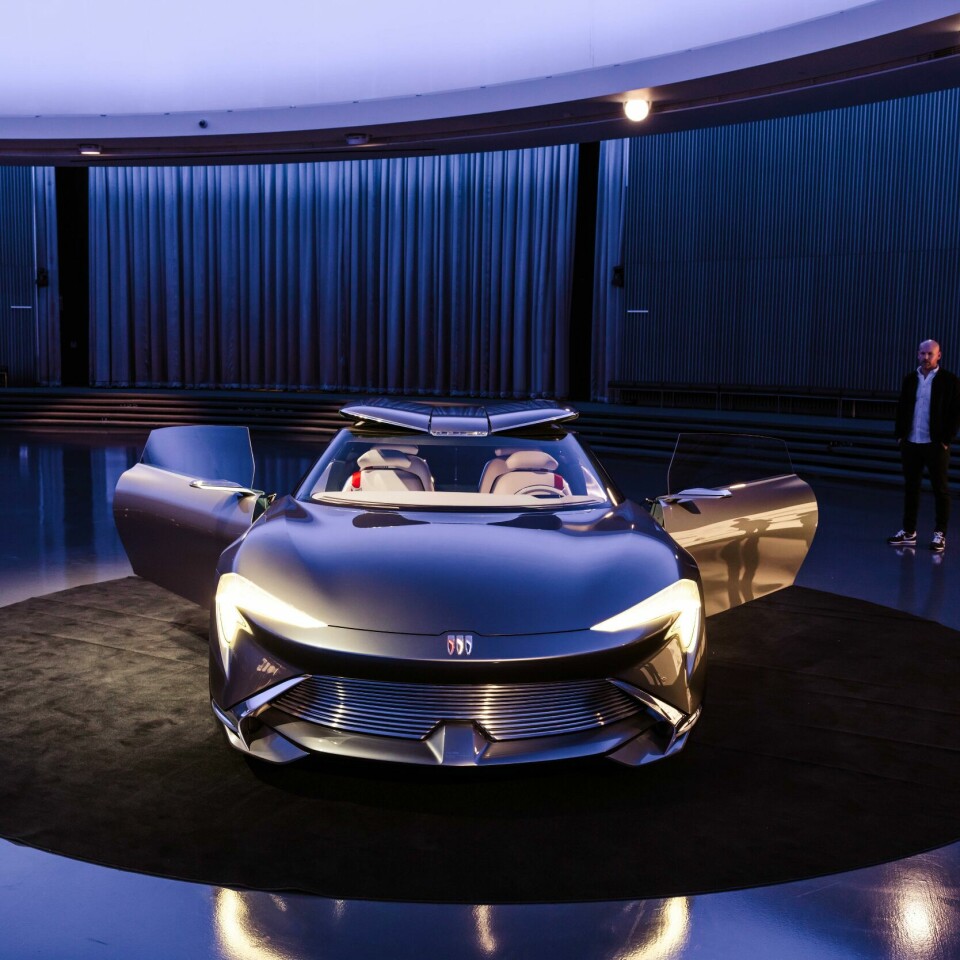
CDN: Were there beacons from other eras of Buick that you looked at beyond the 50s? I’m just curious as to how you mine that heritage without being pastiche.
BB: Yeah, it’s tough. There were a lot of great eras from Buick. Of course, Buick introduced the idea of a concept car in 1938, with the Y-Job.
And that car had that simplicity. And then Wildcats I, II, and III. The 60s were a performance era. It was as much about powertrains and detailing, and less about the elegant forms. I mean, those cars were wonderful. But I was more taken by the sense of optimism during the Harley Earl era – Buick was Harley Earl’s playground. I don’t think anyone would look at the Wildcat and say, “Oh, it’s retro.”
There are areas you can point to that were informed by the things they did back then. Everyone loves the wheels on the Wildcat, for example. Well, they’re inspired by the turbine aesthetic of the 50s, it doesn’t look like a 1950s wheel. The triple light signature that runs up the pillar in the rear was taken from the ’52 Wildcat II, which had these three-lamp stripes that went over the tail fit – that was just a little nod toward that heritage.
CDN: Tell me how the lower mask grille treatment evolved from this sketch?
BB: Originally, the sketch had a black grill on it and the grill was going to be black on the Wildcat concept. We built the model here at the tech centre, and they milled those aluminium strips. We saw them on the table, and there’s something we call the ‘Brass Show’, where you put the entire car together in primer, no finishes on it. They put this aluminium grill on and before it was painted, and I said, “Hold on a second here, folks. We’re not going to paint that grill.” It made for a graphic that was more sealed up, like an EV. So, sometimes you have to make calls on the fly. Sometimes you just go with your gut, and it seemed to work pretty well on that car.
CDN: What did the design team think of that? Was it, “Bob’s lost his mind” or “Bob’s nailed it”?
BB: (Laughs) Here’s the thing, I very rarely tell the designers what to do. We have a small group, I spend a lot of time on the floor and we crowdsource opinions.
If I have an opinion and I say something, I make sure that they feel free to push back, or to share their opinions on these decisions. All the things we did on the car weren’t simply because I told them what to do. It was more a discussion of something that I thought, or very often something that one of the designers said, “What do you think? Will this be cool?” “Yeah, it would be cool,” and we go with it.
Because I don’t want the designers in the studio just to be an extension of something that I see in my head. My role is more to identify something that they have done that has merit, or has legs, and build it together as a team. I’ve been at this for a long time. That car was one of the highlights of my career. Not because of its significance, but just in terms of the experience, how fun it was. And like I said, very rarely do you get the chance to do something entirely new, and to have the entire team come together as one was really rewarding.
